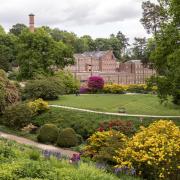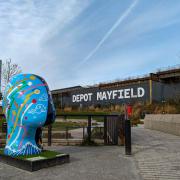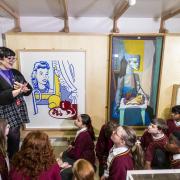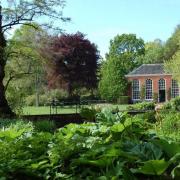Gordon Wilkinson takes his easel to Farndon, a small village which has much to offer
The pretty little village of Farndon, close to the Welsh border, is a fascinating place packed with beautiful buildings, intriguing history and wonderful walks. As the border has moved over the centuries, Farndon has been alternately in Wales and England but their loss is our gain and the village today is a delightful place to live, work or visit. Here we offer five reasons to make the trip to Farndon.Farndon BridgeThe River Dee forms the border between England and Wales and passes just to the west of Farndon. Now Grade I listed, the sandstone Farndon Bridge was built in 1339 and originally had ten arches, two of which have since been lost, as has a gate tower which stood in the centre of the bridge. On the other side of the bridge, in the Welsh village of Holt, the bridge is known as Holt Bridge.St Chad’s Parish ChurchOne of 16 Grade II listed buildings in Farndon, St Chad’s Parish Church dates back to the 14th century, although it needed to be extensively rebuilt after the Civil War when soldiers were billeted inside the church and the building was badly damaged by the battle. Some scars remain, with musket ball damage still evident on the walls of the tower, which may once have been topped with a spire. The church houses a unique window depicting scenes from the war.StrawberriesFarndon was once famed for its strawberries, with fields all around the village given over to their production. Since World War Two when many of the fields were planted with grain, the fruit farms have never been re-established and the closest strawberry fields now are over the bridge in Holt. Horse racingLegend has it that Farndon was the site of the first competitive horse race with jockeys. The race is said to have been run in fields beside the Dee and the racecourse a few miles up the road at Chester is the oldest in England, having hosted its first meetings in the early 16th century.Famous namesJohn Speed, who was born in Farndon in the mid-16th century, worked as a tailor for the first 50 years of his life before devoting his career to his hobby and becoming a full-time map-maker. He was the first Englishman to create an atlas of the world. Maps of Farndon today include the Barnston Memorial, an obelisk on the road into the village from Chester.
It was erected in memory of Roger Barnston whose family lived in the village for 600 years and who fought in the Crimean War and lived at nearby Crewe Hall. The family are also remembered in the Barnston Chapel at St Chad’s Church where the family paid for many alterations. Edward the Elder, the son of King Alfred, and the man who reclaimed much of England after the Viking invasions, died in Farndon in 924.
Where is it? Farndon stands a mile or so from the Welsh border, on the A534. Type CH3 6QP into your satnav to find the village. If you're travelling by train, the nearest stations are in Wrexham about five miles to the west and Chester, about eight miles to the north.
Where to park? There are car parks and plenty of on-street parking around the village.
What to do? Farndon's lovely little collection of shops, including a flower shop owned by Princess Diana's former butler Paul Burrell, is worth visiting and the village has two nice pubs, The Farndon Arms and The Greyhound. There are some terrific riverside walks, too.
Click the picture on the right to start playing the audio
This recording is courtesy of Sandbach and District Talking Newspaper service
From a state-of-the-art digital studio in Sandbach, about 100 visually impaired listeners are served every week, but Sandbach TN is actively trying to increase the number of its listeners and also to reach others who perhaps suffer a disability which makes reading a strain.
For more information please look at the charity's website, www.talkingnews.org.uk, or call Pam on 01606 833408


























